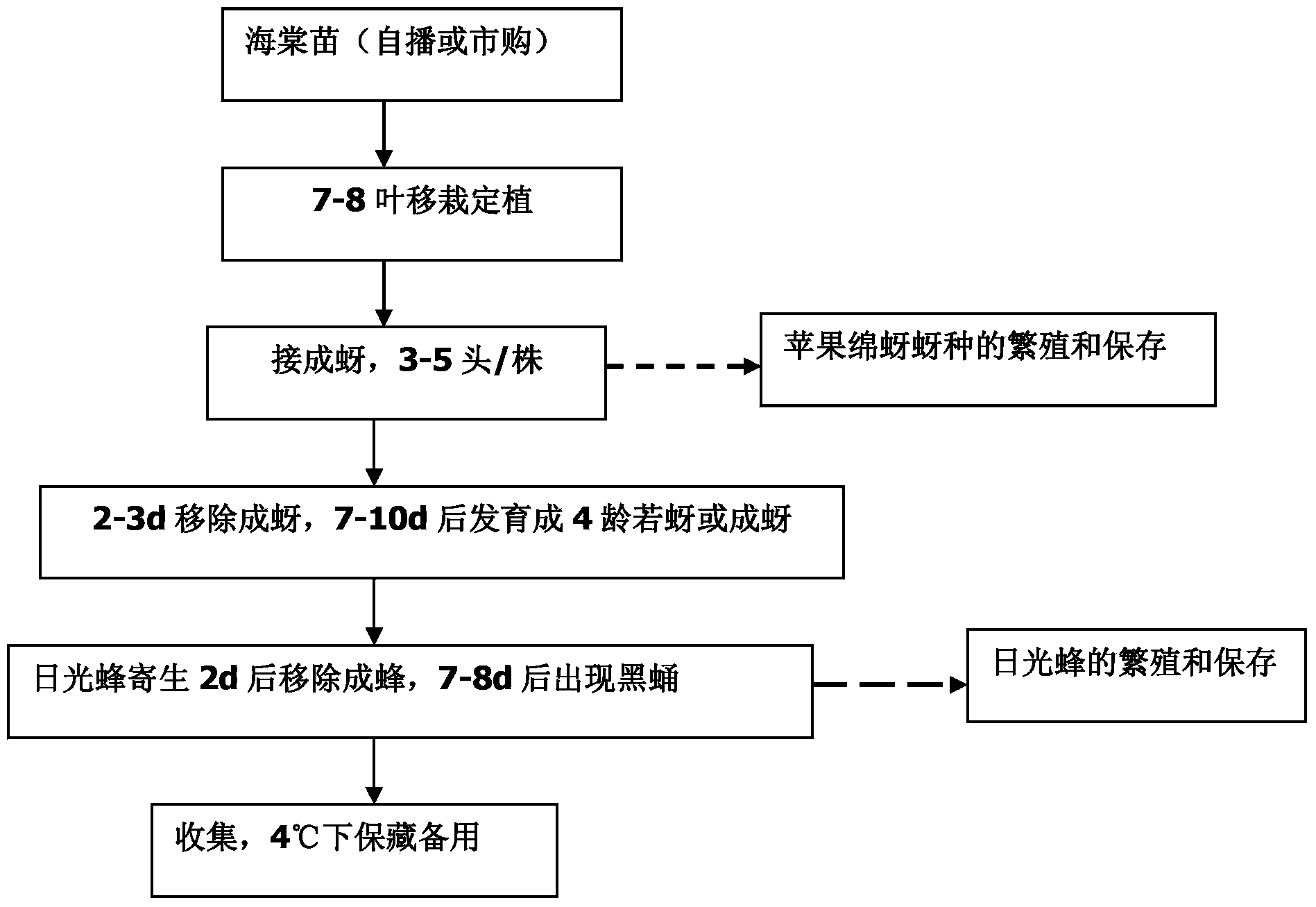Simple method for breeding aphelinus mali
A simple and simple technology for solar bees, applied in the field of rapid multiplication of solar bees, can solve the problems of low number of bees, complicated operation, large space occupation, etc.
- Summary
- Abstract
- Description
- Claims
- Application Information
AI Technical Summary
Problems solved by technology
Method used
Image
Examples
Embodiment 1
[0018] The selection of embodiment 1. host plant:
[0019] 1-year-old crabapple Malus prunifolia (Willd.) seedlings. (Fruit growers cultivate their own rootstock materials for grafting apple seedlings, which can be purchased at the nursery stock market or sowed and cultivated by themselves. If self-sowed and cultivated, the seeds must be treated before sowing to make them white before sowing.)
Embodiment 2
[0020] Embodiment 2. The cultivation and management of host plant:
[0021] Use a disposable plastic water cup (diameter 5.0cm, height 11.0cm), drill a drainage hole at the bottom, or use a small flowerpot of appropriate size to fill it with soil mixed with humus. When the crabapple seedlings grow to 7-8 leaves, they can be transplanted into cups (pots) for planting. During the transplanting period, the soil moisture content in the cups should be observed daily, and watered in time. When the temperature is high in summer, a sunshade net should be added for sun protection. Generally, 10- After about 15 days, the seedlings can survive and can be used for the mass reproduction of the apple aphid.
Embodiment 3
[0022] Embodiment 3: the relation of parasitic quantity and age of host
[0023] Prepare a certain number of insect-free crabapple seedlings in advance, and the cultivation method is as in Example 2. Connect 3 or 5 adult aphids to each crabapple seedling, let them colonize and produce nymphs for 2-3 days, and then remove the adult aphids , when the nymphs develop to the 1st, 2nd, 3rd, 4th instar and adult aphids, insert the begonia seedlings with insects into 1 pair of newly emerged Sunlight bees (one male and one female), with a diameter of 50.0cm, a height of The 80 mesh gauze cover of 30.0cm covers the crabapple seedlings. Place the insect cages containing crabapple seedlings and sun begonia in the incubator (temperature 24±1°C, light-dark ratio 14:10, RH60-70%), let the sun begonia parasitize for 48 hours and then remove the sunbeam adults, crabapple The apple cotton aphid on the seedlings continued to be raised, and when black pupae appeared on the branches, the number o...
PUM
| Property | Measurement | Unit |
|---|---|---|
| Diameter | aaaaa | aaaaa |
| Diameter | aaaaa | aaaaa |
Abstract
Description
Claims
Application Information
 Login to View More
Login to View More - R&D
- Intellectual Property
- Life Sciences
- Materials
- Tech Scout
- Unparalleled Data Quality
- Higher Quality Content
- 60% Fewer Hallucinations
Browse by: Latest US Patents, China's latest patents, Technical Efficacy Thesaurus, Application Domain, Technology Topic, Popular Technical Reports.
© 2025 PatSnap. All rights reserved.Legal|Privacy policy|Modern Slavery Act Transparency Statement|Sitemap|About US| Contact US: help@patsnap.com



